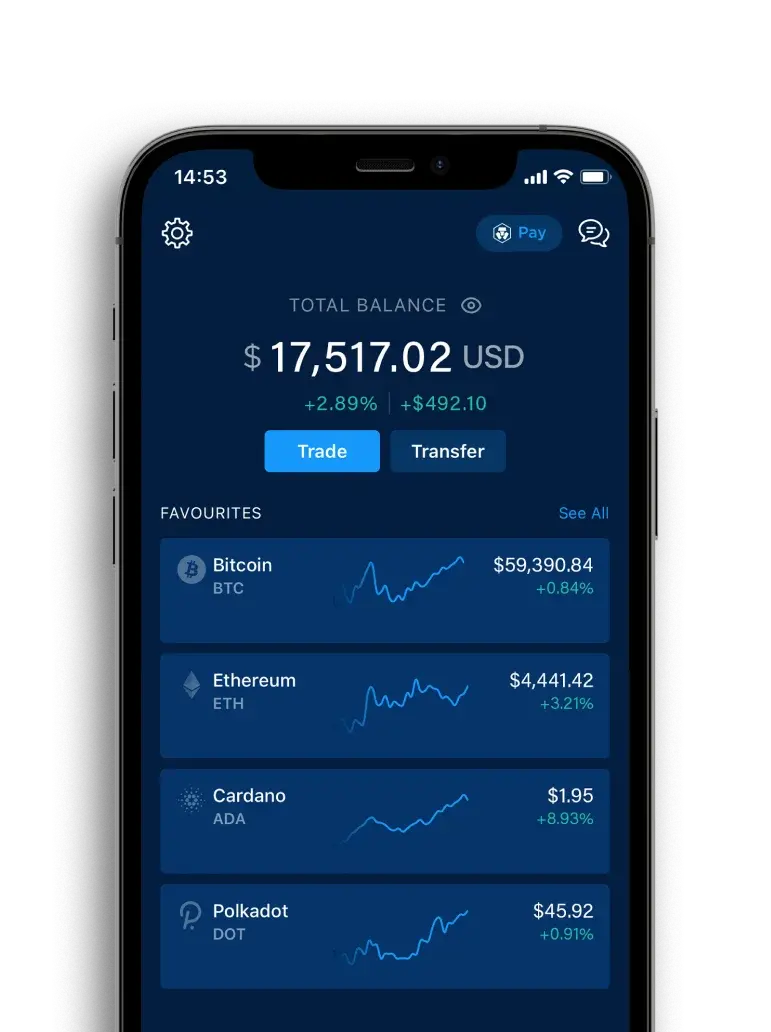
Key Takeaways:
- NFTs are unique and irreplaceable digital assets minted on a blockchain. These comprise digital art, collectibles, and even in-game assets for blockchain games.
- NFTs have several defining characteristics, including digital uniqueness, publicly verifiable and traceable ownership, and a level of scarcity.
- Digital collectibles have the potential to power the creator economy, with individuals able to build in royalties while creating their NFTs.
- Corporations have begun to engage NFTs, as well, with auction houses Christie’s and Sotheby’s embracing the space, along with social media platform TikTok.
What Are NFTs?
NFT stands for ‘non-fungible token’ — an authentic, irreplaceable asset that lives on a blockchain. Every NFT is unique, even if multiple ones represent the same item. Prominent use cases for NFTs today include in-game assets, digital art, and collectibles. In comparison, fungible assets — like Bitcoin (BTC) or the US dollar — have units that are interchangeable with one another.
NFTs entered the mainstream in 2021, with digital collectibles selling for millions of dollars at auctions and gaining the attention of media outlets around the world. A digital artwork by the artist Beeple titled ‘Everydays: the First 5000 Days’ sold for a record US$69.3 million at an online auction held by British auction house Christie’s.
In June 2021, one of the world’s oldest auction houses, Sotheby’s, opened a virtual gallery on Decentraland to auction NFTs. Its most notable sale to date, ‘CryptoPunk #7523’, sold for $11.75 million at its Natively Digital auction.
While the artwork of NFTs is various and abundant, the revolutionary aspect that sets NFTs apart is the technology behind them. NFTs are a method for granting people unique ownership of digital assets by registering them on a blockchain. This enables an unambiguous framework for value in virtual exchange. It’s a game-changing solution with significant implications for the future of human interaction.
Characteristics of an NFT
- NFTs are digitally unique: As every NFT has its own identifier, registering digital assets on a blockchain grants unique ownership to the holder.
- NFTs have publicly verifiable and traceable ownership: The token in the owner’s crypto wallet proves that their copy of the digital file is the original one, while their private key is proof of ownership over the original NFT. Those who attempt to copy the file that the NFT represents won’t receive benefits that are predicated on holding the real NFT.
- NFTs may be scarce: The creator of an NFT can decide how many editions are minted. This is akin to artists creating a limited number of physical art prints.
Creator Economy
Currently, content creators often don’t get paid the full value of their work, as ownership is often shared with third-party platforms.
NFTs can power a new creator economy, however, where creators themselves don’t need to hand over ownership of their content to the platforms they use. That’s because ownership is already baked into the content itself. Additionally, royalty payouts can be completely automated should the creators set that up beforehand.
NFTs in the Metaverse
NFTs enable individuals to securely build their digital identity in the Metaverse and traverse across different ecosystems. While passwords can be stolen and biometrics can be hacked, an identity that’s secured on the blockchain is more difficult to fake and steal. By establishing a way for individuals to own and control their digital identities, NFTs can vastly improve an ‘open-loop’ virtual environment, such as in gaming or on social media.
One example of an NFT game is Axie Infinity, where players can own, buy, sell, and trade resources through a play-to-earn (P2E) system and a secondary marketplace. These resources can then be used in the game to complete quests and defeat bosses.
GameFi and Other Uses for NFTs
- Owning video game assets: Some NFTs are tradeable in the world of video games, where items are fully owned by the gamer and can be sold or traded. This is another big step into the world of decentralisation that blockchain technology is facilitating.
- New ways of scaling NFTs: TikTok, the social media platform that has surpassed Instagram in popularity, partnered with ImmutableX to immortalise its most popular moments as NFTs. A company as large as TikTok using Layer-2 technology — the second layer of a blockchain that serves to bypass some of its existing bottlenecks — gives a glimpse into how NFTs might evolve.
NFT Perks
Some NFT collections, such as ‘Bored Ape Yacht Club (BAYC)’, also provide real-world benefits. BAYC is building a community through meetups and parties for collectors, with celebrities including Eminem, Jimmy Fallon, Stephen Curry, and Snoop Dogg holding an NFT from the collection.
How to Buy an NFT
The Crypto.com NFT Marketplace features curated NFTs from the worlds of art, music, and sports, including Formula 1, the UFC, and the Philadelphia 76ers. Users can discover collections by popular creators, trade NFTs in the Marketplace with other users, and share their creativity with the world by minting their own collectibles.
How to Sell an NFT
Users can now mint and sell NFTs on the Crypto.com NFT Marketplace through a simple creator application process. Head over to Crypto.com NFT and click ‘Create’ on the navigation bar to be directed to the application page. Creators should detail their journey and provide concrete examples of their past experience. Additionally, they should note down the types of NFTs they wish to create and mint on the platform.
Due Diligence and Do Your Own Research
All examples listed in this article are for informational purposes only. You should not construe any such information or other material as legal, tax, investment, financial, or other advice. Nothing contained herein shall constitute a solicitation, recommendation, endorsement, or offer by Crypto.com to invest, buy, or sell any coins, tokens, or other crypto assets. Returns on the buying and selling of crypto assets may be subject to tax, including capital gains tax, in your jurisdiction. Any descriptions of Crypto.com products or features are merely for illustrative purposes and do not constitute an endorsement, invitation, or solicitation.
Past performance is not a guarantee or predictor of future performance. The value of crypto assets can increase or decrease, and you could lose all or a substantial amount of your purchase price. When assessing a crypto asset, it’s essential for you to do your research and due diligence to make the best possible judgement, as any purchases shall be your sole responsibility.





